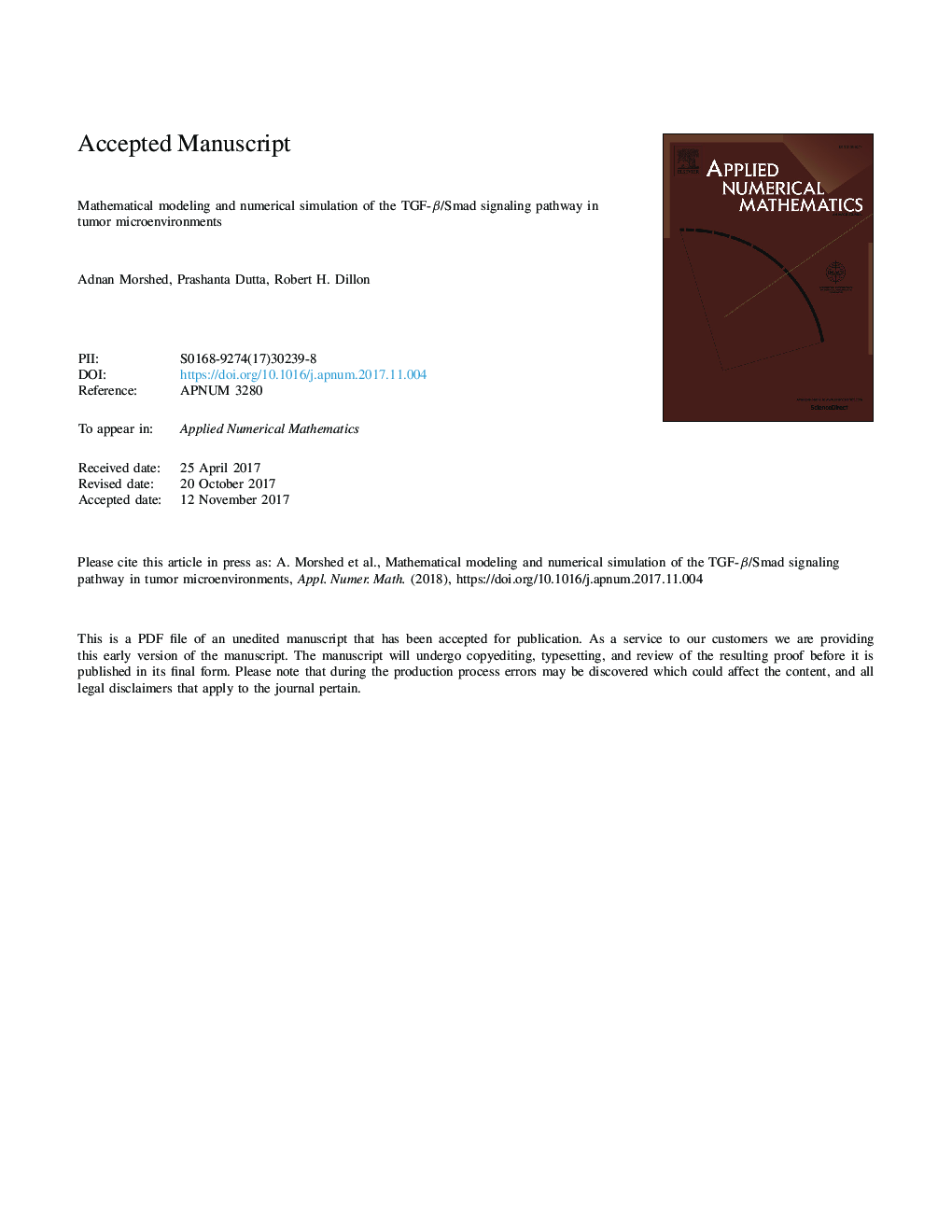| Article ID | Journal | Published Year | Pages | File Type |
|---|---|---|---|---|
| 8946324 | Applied Numerical Mathematics | 2018 | 29 Pages |
Abstract
Mammalian cells respond in a variety of ways to concentrations of activated transforming growth factor (TGF) in the extracellular domain via intracellular Smad signaling pathways. TGF-β/Smad interaction is prevalent in a wide range of tumor environments with both autocrine and paracrine mechanisms driving temporal evolution. TGF-β has been reported to exhibit both pro- and antagonistic roles in tumor progression and survival. It has been argued that tumor cells upregulate TGF-β production by modifying the TGF-β/Smad pathway. Although several numerical studies of the tumor microenvironment have been conducted, most are based on PDEs where the cells are represented as a continuum or on discrete agent-based methods. Here, we develop a hybrid/cells-based model for the tumor microenvironment with cells represented as discrete entities in which diffusion and reaction in the extracellular environment as well as protein/receptor surface interactions are described using immersed interface methods. We develop a model for the cellular TGF-β/Smad pathways with the intracellular processes represented by systems of ODE's. In this study, we investigate the variation in cellular response with different levels of TGF-β in the extracellular environment. Our numerical results show that the model can account for experimental results on tumor cell lines when intracellular production and secretion of TGF-B based on activated Smad concentrations are included in the model system. Additionally, we studied the intracellular and surface levels of TGF-β in two different types of cells and observed variation in the extracellular domain.
Keywords
Related Topics
Physical Sciences and Engineering
Mathematics
Computational Mathematics
Authors
Adnan Morshed, Prashanta Dutta, Robert H. Dillon,
